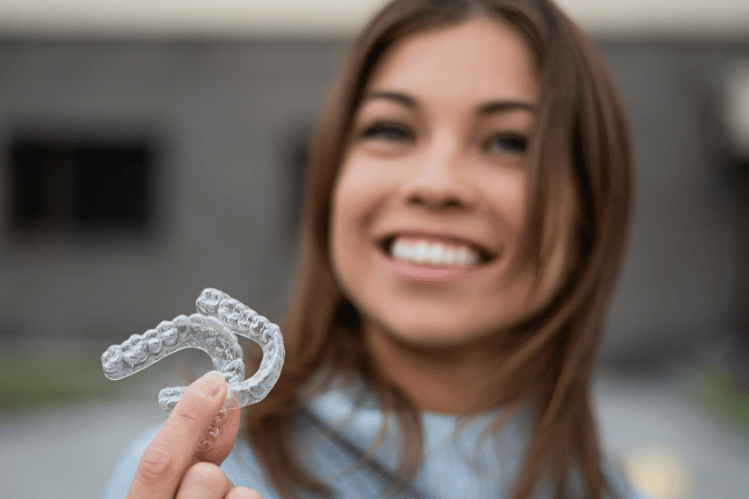
Introduction
Jaw pain is a common issue that affects millions of people worldwide. It can be caused by various factors, such as teeth misalignment, bruxism (teeth grinding), or temporomandibular joint (TMJ) disorders. In recent years, invisible aligners have gained popularity as an alternative to traditional braces for correcting teeth misalignment. However, there is a growing concern about the impact of invisible aligners on TMJ health and the potential for exacerbating jaw pain.
In this blog post, we will explore the relationship between invisible aligners and TMJ health, and provide insights into ways to prevent TMJ discomfort.
Understanding TMJ Disorders
Before discussing the effects of invisible aligners on TMJ health, let's first understand what TMJ is and what can go wrong.
Anatomy of TMJ:The temporomandibular joint (TMJ) is a complex joint that connects your jawbone to your skull. It plays a crucial role in various activities, including chewing, speaking, and even yawning.
TMJ Disorders: TMJ disorders encompass a range of conditions that affect the TMJ and its surrounding structures. Common symptoms include jaw pain, clicking or popping noises, headaches, and difficulty in opening or closing the mouth.
Effects of Invisible Aligners on TMJ Health
Now that we have a basic understanding of TMJ and its disorders, let's explore how invisible aligners can impact TMJ health.
Improved Bite Alignment: One of the primary goals of invisible aligners is to correct bite alignment issues, such as overbites, underbites, and crossbites. Properly aligning the teeth can alleviate stress on the TMJ, potentially reducing the risk of TMJ disorders.
Customized Treatment Plans: Invisible aligners are designed based on a thorough examination of your oral health. This personalized approach minimizes the risk of inadvertently worsening existing TMJ issues.
Minimal Hardware: Unlike traditional braces, which consist of brackets and wires, invisible aligners are made of smooth, comfortable plastic. This reduces the chances of irritation and discomfort in the TMJ area.
Gradual Adjustment: Aligners work by gently shifting your teeth over time. This gradual adjustment can be less stressful on the TMJ compared to sudden movements that may occur with traditional braces.
Preventing TMJ Discomfort During Aligner Treatment
While invisible aligners are generally TMJ-friendly, it's essential to take proactive measures to prevent any discomfort or complications. Here are some tips:
Choose a Qualified Provider Start by selecting a reputable orthodontist or provider experienced in invisible aligner treatments. A professional will conduct a comprehensive evaluation of your dental molds and create a treatment plan tailored to your needs.
Communication is Key If you experience any discomfort, pain, or changes in your TMJ during aligner treatment, don't hesitate to communicate with your orthodontist or provider. They can make necessary adjustments to your treatment plan.
Practice Proper Oral Hygiene Maintaining good oral hygiene during aligner treatment is essential. Clean aligners and teeth regularly to prevent any bacterial buildup that could exacerbate TMJ problems.
Stress Management High stress levels can contribute to TMJ disorders. Incorporate stress-reduction techniques like meditation or yoga into your routine to promote TMJ health.
Conclusion
Invisible aligners offer a fantastic opportunity to achieve a straighter smile discreetly. They are generally considered safe for TMJ health and can even help alleviate existing bite alignment issues. However, it's crucial to approach this treatment with diligence and care.
Remember that everyone's experience with invisible aligners is unique, and any discomfort or pain you may encounter is often temporary. By taking proactive measures, you can enjoy the benefits of invisible aligners while safeguarding your TMJ health. Ultimately, the goal is to not only achieve a beautiful smile but also maintain optimal oral health and overall well-being.
FAQs
How can I maintain proper oral hygiene while wearing invisible aligners?
To maintain good oral hygiene, remove your aligners before eating or drinking (except water). Brush and floss your teeth before reinserting the aligners to prevent bacteria buildup.
Will I need to wear a retainer after completing my invisible aligner treatment, and can it affect my TMJ health?
Retainers are often prescribed after aligner treatment to maintain the results. They are generally not known to negatively impact TMJ health when used as directed by your provider.
What should I do if I experience persistent or severe jaw pain during aligner treatment?
Contact your orthodontist or dentist immediately if you experience persistent or severe jaw pain. They can assess the situation and make necessary adjustments to your treatment plan.

